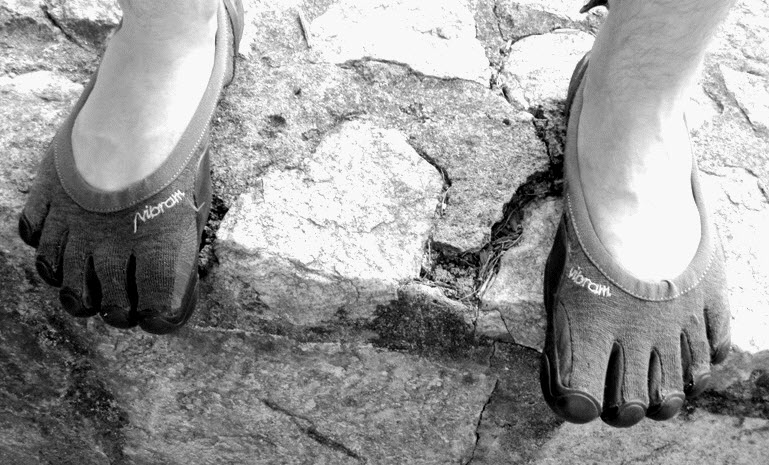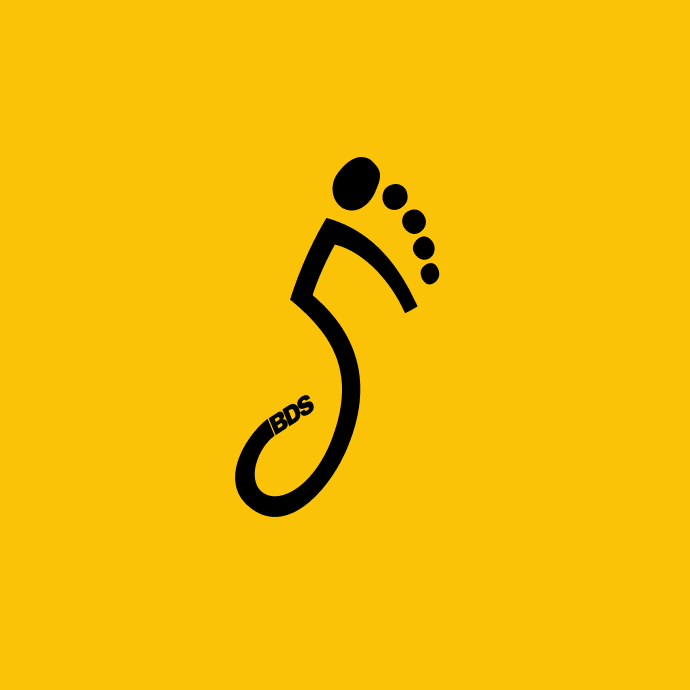"Barefoot Shoes" — the whats, whys, and hows
You might say "barefoot shoes" is a misnomer — absurd and ridiculous. The phrase has even been banned by r/barefootrunning. Truth is: "barefoot shoes" sorta, kinda works. Less shoe, more you.
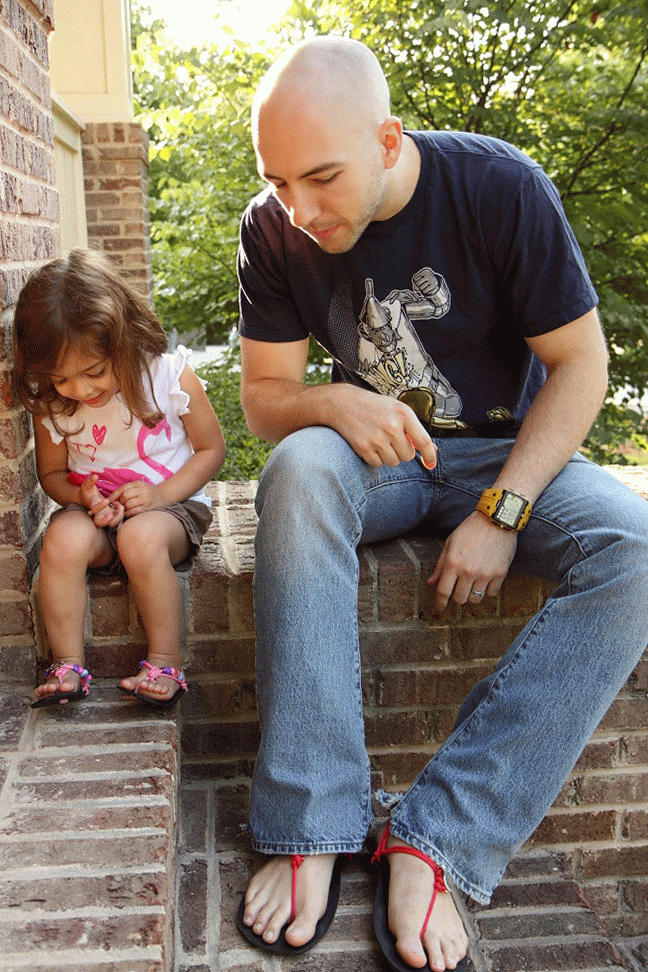
What are "barefoot shoes"?
"Barefoot shoes" are shoes designed to allow for the natural movement and function of the naked human foot. Every shoe, no matter how minimal, will have some influence over the foot's natural function. "Minimalist shoes" (or minimalist sandals) aim to — you guessed it — minimize that influence, getting out of the way of the foot and enabling a wearer's feet to move, flex, and function as they would barefoot (sometimes referred to as "unshod," as silly as that is to write).
What does "natural movement" mean in practice? How are feet supposed to function? Let's think about it.
- Feet are full of nerves. They're sensitive to heat, texture, and pain.
- Feet are flexible. Feet can move in all kinds of ways. They can point up and down, twist around, and toes can be stretched, clenched, and wiggled.
- Feet are resilient. Feet react. They are tough. Anti-fragile. Feet get stronger with use. Most anyone could go outside barefoot and walk or run right away.
- Feet are strong. Feet are full of muscle, bone, and ligament. Do they really need exterior support? Well that really depends, doesn't it?
The Job to Be Done of a healthy shoe is to get out of the way of a foot's natural movement and strength. In other words, minimalist or "barefoot shoes" support feet by not supporting feet, by avoiding doing stuff to feet at all. They try to get out of the way of the foot's natural function. But there are exceptions that, though obvious to anyone, require stating. Barefoot shoes are given room to "get in the way" of natural foot function through affording the wearer some protection from the world — most often through the soles though also through the uppers, at times (e.g. through waterproofing). And because mankind is a fashionable animal, form also has an influence.
That's just the way it is. So yes, barefoot shoes are not barefoot, which can lead to ridiculous word thinking arguments. Don't get too bogged down in all of this. Simply understand that you want to maximize foot function.
Minimalist shoes make it possible for feet to do what they are capable of doing.

Why wear barefoot shoes?
"But, Justin, that's great. But barefoot shoes are kinda weird. Why should I ditch normal shoes for barefoot shoes? Is that really necessary?"
I've been wearing minimalist footwear of all shapes and styles — for more than 15 years now. Of course minimalist shoes aren't necessary and I own some very point, hard-soled and heel-lifted dress shoes for special occasions — the kind where fashion matters most. The kind where making Mrs. BirthdayShoes feel like she has a normal husband is paramount.
But most often I wear shoes — or sandals if possible — that are foot-friendly.
Why do I do this? Let me break it down for you, based on my experience as well as what I’ve learned along the way.
Here are 5 things to consider when thinking about why to wear barefoot shoes:
1. How barefoot shoes support foot health
First off, barefoot shoes aim to let feet be feet — we've already covered that in detail earlier, but it's worth repeating.
By comparison, traditional shoes tend to be stiff-soled and tight on your toes. They influence your posture by lifting your heel higher than your forefoot. They add "arch support" and other impediments to the natural movement of the foot. They are heavy. You get the idea.
Barefoot shoes flip that script. Wide toe boxes (or no toe boxes as with huaraches) let your toes spread out naturally. This freedom of movement may help you avoid foot problems, everything from odor problems to hammer toes to bunions and more. Minimalist footwear helps to unshackle your feet after years of confinement.
Turns out that having freer feet has downstream benefits of feeling lighter and more a part of the world around you. Don't take my word for it either — just ask around.
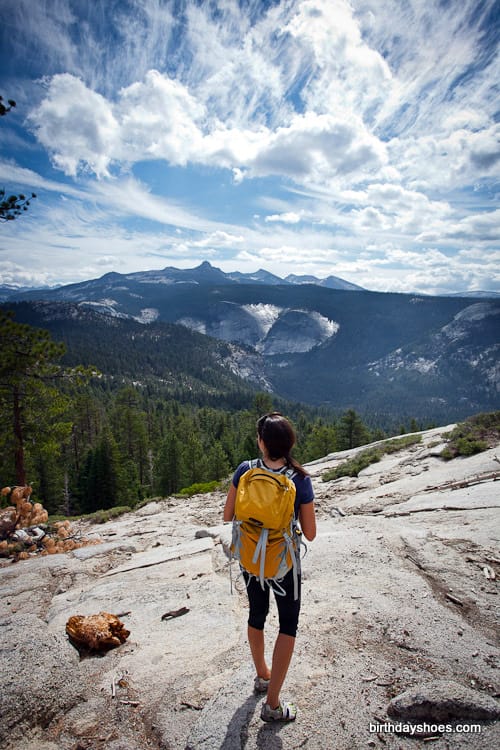
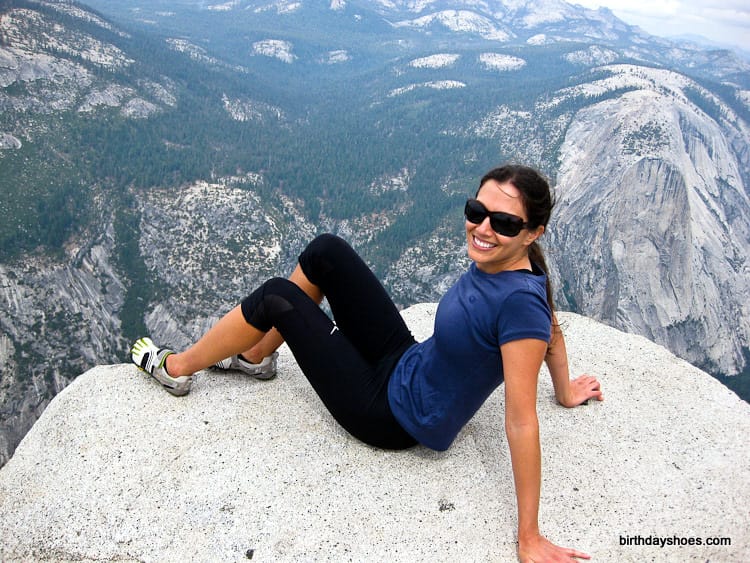
Leah took her Vibram FiveFingers up Half Dome. Here's that story.
2. How barefoot shoes support posture and alignment
Then there’s the way barefoot shoes change how you move. Eliminating thick padding and arch support result in biomechanics consistent with your default physiology. Many people find this to be a very good thing.
Our bodies (and brains) being so very adaptive, they can make movement work in just about any kind of footwear. And if you've been wearing maximalist shoes for years, the way you move will reflect that fact.
If you begin wearing barefoot shoes (or just going barefoot), you won't instantly, miraculously change how you move. Adaptation takes time — everything from how your nervous system works to the relationships of your muscles, bones, and tendons is likely going to have to adapt. Some of that may be quick — the neuroplasticity of the brain is incredible. Some of that change may take months or even years.
Over time, you're likely to start landing more on your midfoot when running. You are likely to walk much more gently, finding you sneak up on people as an unintended consequence (bookmark this article on How to Walk With Less Impact). This is as opposed to the jarring feeling of always landing heel first. This can reduce jarring impacts to your knees and hips too. It's a win for your entire body.
All of this change can straighten out your posture too. Add in some weight lifting to strengthen your back (like deadlifts!), and your entire body will get stronger.
Minimalist footwear is a piece of a larger effort — for me — to create more alignment with my human nature and modern life, from the ground up.
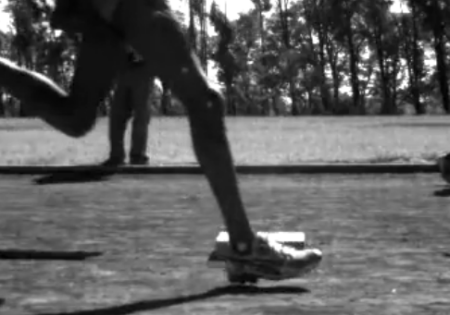
3. Why feeling the ground with barefoot shoes is good
Going barefoot is the direct way to get in touch with the ground beneath your feet. Our feet contain xxx nerves. If you've ever gotten dirt in your shoe, you know how annoying even a tiny granule can be.
Our feet are sensitive because that sensitivity has downstream effects. Sensitive feet make us less likely to puncture our skin or bruise our bones because we're recklessly traversing difficult terrain. For faster movements — like running — the sensitivity of feet leads to lighter stepping, and a higher turnover (running cadence). The wave of energy that begins a foot hits the ground can be accepted more gradually throughout the entire body. That starts with sensitive feet.
But let's be very clear. Any and all footwear gets in the way of this process, reducing the sensations of the foot on whatever terrain is there. This is unavoidable, and no amount of "barefoot shoe" marketing or technology will — ort can — change this simple fact. A barefoot gets a different ground to feel with every step. A shod or sandaled foot significantly less so.
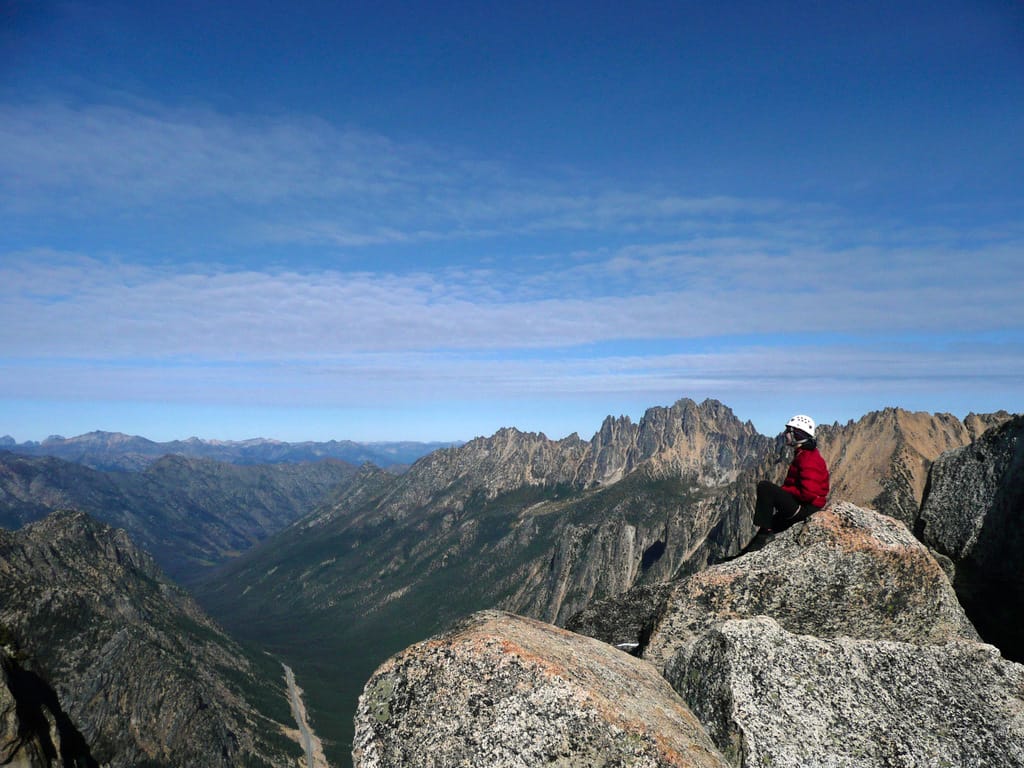
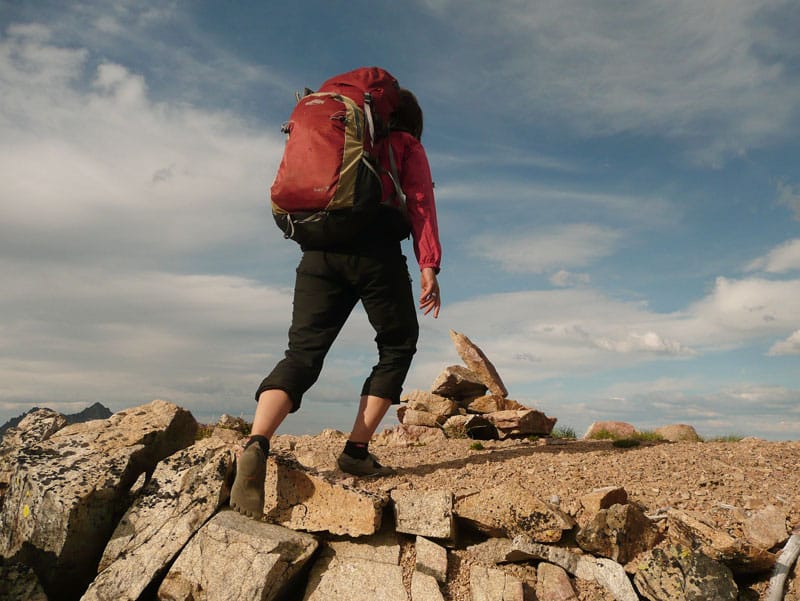
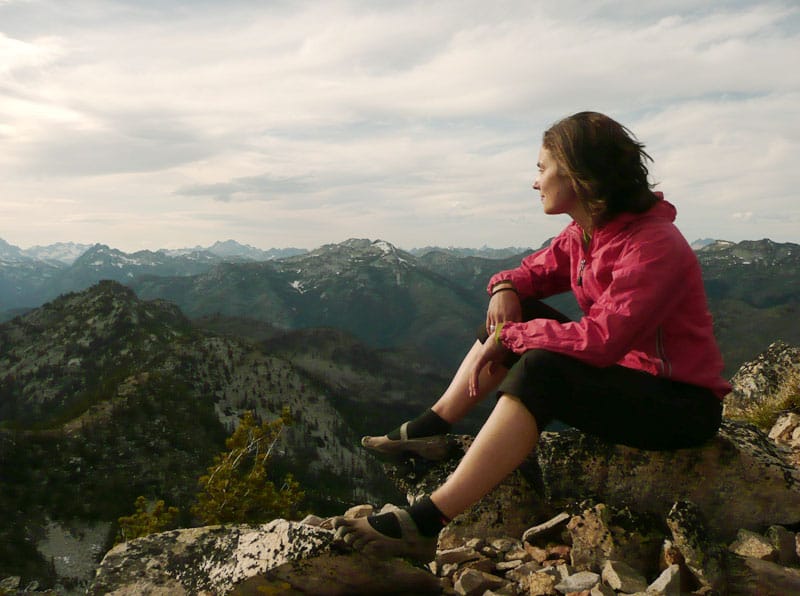
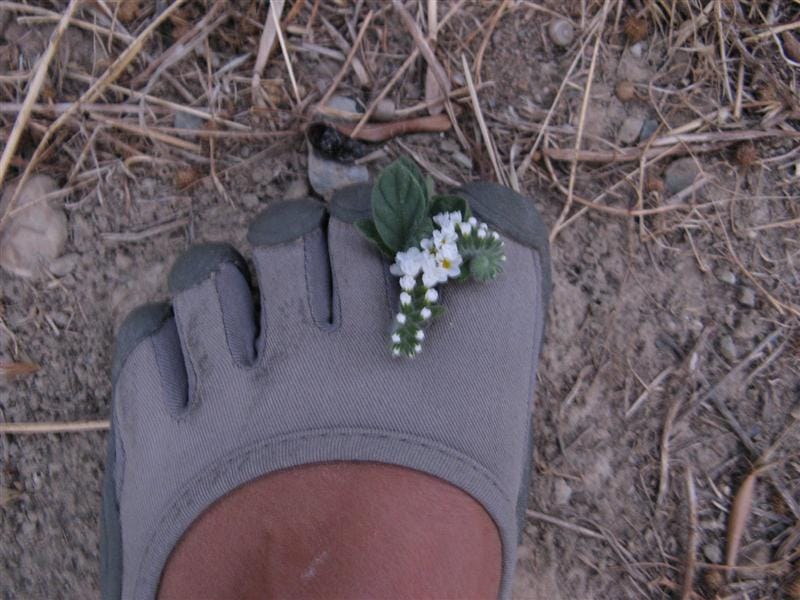
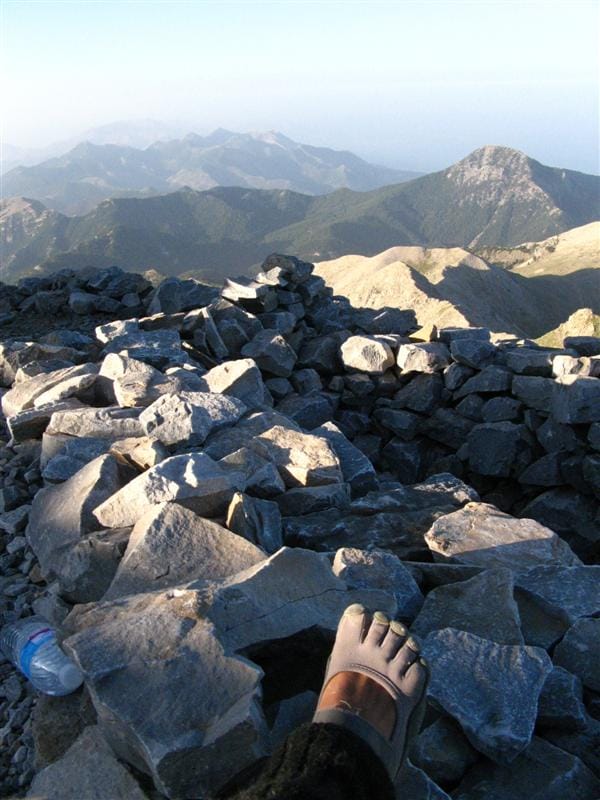

Here are several photos from Maria, who took to hiking in one of the more minimalist versions of Vibram FiveFingers. Her stories here and here and here.
So you accept this truth when wearing barefoot shoes, and that's okay. Most folks want to mute some of the ground feel. That's okay. Barefoot shoes, generally speaking because ground feel is highly variable from sole to sole, result in greater ground feel, which means your body gets more of the sensation signal, which means it learns to move more effectively in the world.
Thin soles of barefoot shoes can help you you feel what’s underfoot — from pebbles to cracks in the sidewalk. On gravel, they can mean you get a lot of variation that amounts to a kind of chaotic foot massage.
Having less shoe on your foot supports the natural proprioception of the foot (fancy word for knowing where your body is in space). This can benefit your sense of balance, your agility, and your feeling of lightness.
Barefoot shoes help you pay more attention to the world underfoot.
4. Barefoot shoes are comfortable
The less shoe and more flexible the sole, the more your feet feel unconstrained. Unless you like the feeling of bound feet, and nothing wrong with that, the freeing comfort of barefoot shoes is a big benefit. Whereas with "regular ol' shoes" that you can't wait to take off, you might forget you're wearing a pair of minimalist footwear.
Who doesn't want to be more comfortable all the time? If you're after that, you might like to try a pair of barefoot shoes.
5. Barefoot shoes help you to be "more human"
Thousands of words could be spilled about how modernity has upended man's natural state — and you could argue, easily, much of modernity is a big improvement.
But progress isn't too often linear. And I like to lean on Heraclitus' observation that, “There is harmony in the tension of opposites, as in the case of the bow and lyre.”
How do we find a more harmonious way to live in these modern times? You can ask this question about your work, your physical movement, your relationships, and on and on ... and you can ask it about your footwear.
Barefoot shoes are worth trying if you're looking to find more of a harmonious balance, one that starts from the ground up.
If you haven't tried barefoot shoes or minimalist sandals, what's stopping you?
How are barefoot shoes designed?
Typical attributes of barefoot or minimalist shoes (and sandals) include:
- Wide toe box – minimalist shoes don't squish your toes.
- Flexible soles – minimalist shoes have soles that can bend and move easily.
- Sensitive – the flexible soles of minimalist shoes are often thin enough to transmit more sensations to the wearer, passing on surface texture.
- "Zero-drop" – minimalist shoes are level from heel to toe with no difference in "stack height."
- Lightweight – barefoot shoes don't add a lot of heft to your foot, making it easy to forget you're even wearing them.
There other common traits that you'll find in typical barefoot and minimalist shoes. There is no "official" definition for these kinds of shoes — no requirements that make a shoe or sandal "barefoot" or not. But like the elephant test, you'll know them when you see them. More accurately, you'll know a barefoot shoe when you feel them on your feet — and they shouldn't feel like too much at all.

What are popular brands of barefoot shoes?
Here are some of the most popular brands of barefoot shoes today:
- Xero Shoes — founded in 2009 by Steven Sashen and Lena Phoenix selling huaraches, Xero Shoes sells millions of minimalist shoes and sandals today. Here are some of our Xero Shoes reviews.
- Vibram FiveFingers — the toe shoes that started it all, these foot gloves continue to be staples for millions of barefoot enthusiasts, and they were the original inspiration for founding this website. Here are FiveFingers reviews. 🔖 The origin story of Vibram FiveFingers.
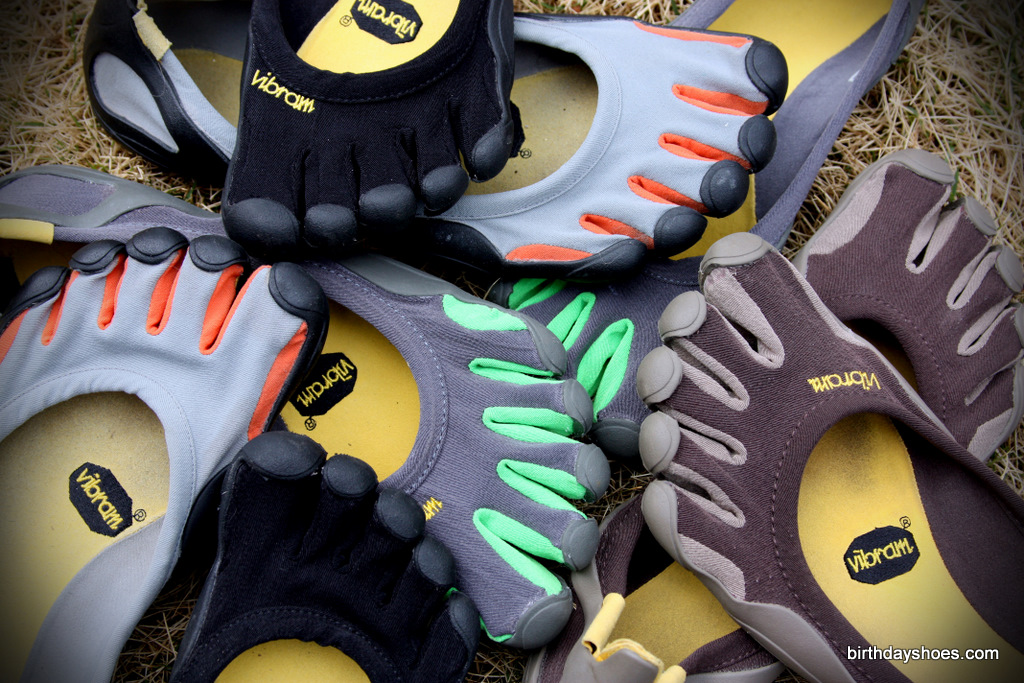
- Vivobarefoot — one of the oldest barefoot shoes manufacturers, Vivobarefoot makes every style of minimalist shoe, and they continue to be a popular favorite. Here are our Vivobarefoot reviews.
- There are many, many other brands — read our barefoot shoes reviews.
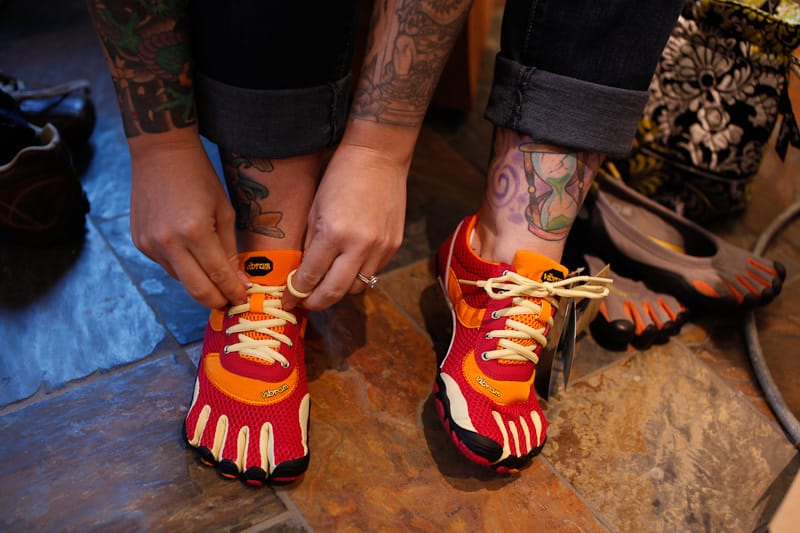
What are popular brands of minimalist sandals?
You can't talk about barefoot shoes and not talk about minimalist sandals. Specifically, minimalist sandals aim to achieve similar goals as minimalist shoes — to support the natural movement of the foot.
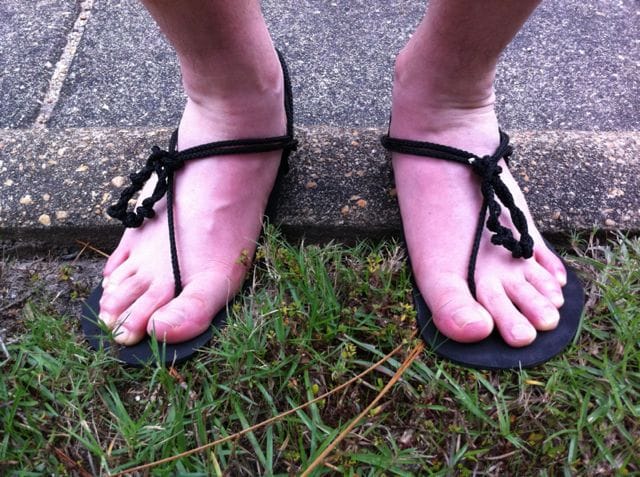
The most popular minimalist sandals take inspiration from huaraches-style sandals. (Find all our huaraches-style sandals reviews.) There are some incredible minimalist sandals manufacturers out there — or you can make your own with simple materials like a sheet of rubber, some nylon, and some know-how.
Popular minimalist sandals brands:
- LUNA Sandals — the company founded by "Barefoot Ted" McDonald, the runner made famous by Christopher McDougall's national best-seller Born to Run. LUNA makes fantastic minimalist sandals like the LUNA Mono. Read our LUNA Sandals huaraches reviews.
- Xero Shoes — Xero came to life as a company called Invisible Shoes. Their original product was nothing more than a flat-packed 12" sheet of Vibram rubber and some nylon. Now they make all kinds of barefoot shoes, including various types of sandals. Here are some of our Xero Shoes reviews.
- Shamma Sandals — Shamma Sandals makes a variety of huaraches-style minimalist sandals with many innovative strap styles. We have reviewed many Shamma Sandals over the years.

- Earthrunners — Uniquely focused on offering "grounding" benefits, Earthrunners are simple, popular, well-made huaraches-style minimalist sandals. Here are our Earthrunners reviews.
- Bedrock Sandals — Bedrock is one of the more maximalist minimalist sandals given their soles tend to be more rigid; however, they are "zero drop" and stay locked onto your feet. They are, after all, huaraches-inspired in design. Read our Bedrock Sandals reviews.
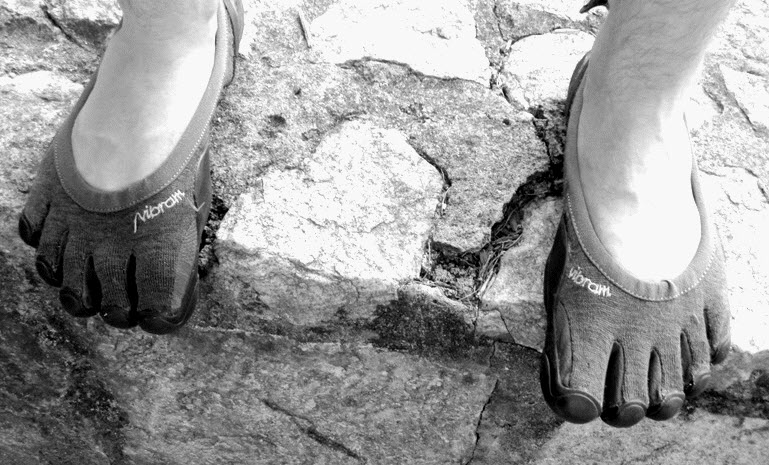
For an in-depth discussion of what makes huaraches work, read Why toe shoes?
What's next for barefoot shoes?
What are your favorite barefoot shoes? What new innovations will emerge next? Time will tell, and we aim to cover these developments on BirthdayShoes — so be sure to subscribe, and join this movement for stronger and healthier people, from the ground up.
Further reading:
